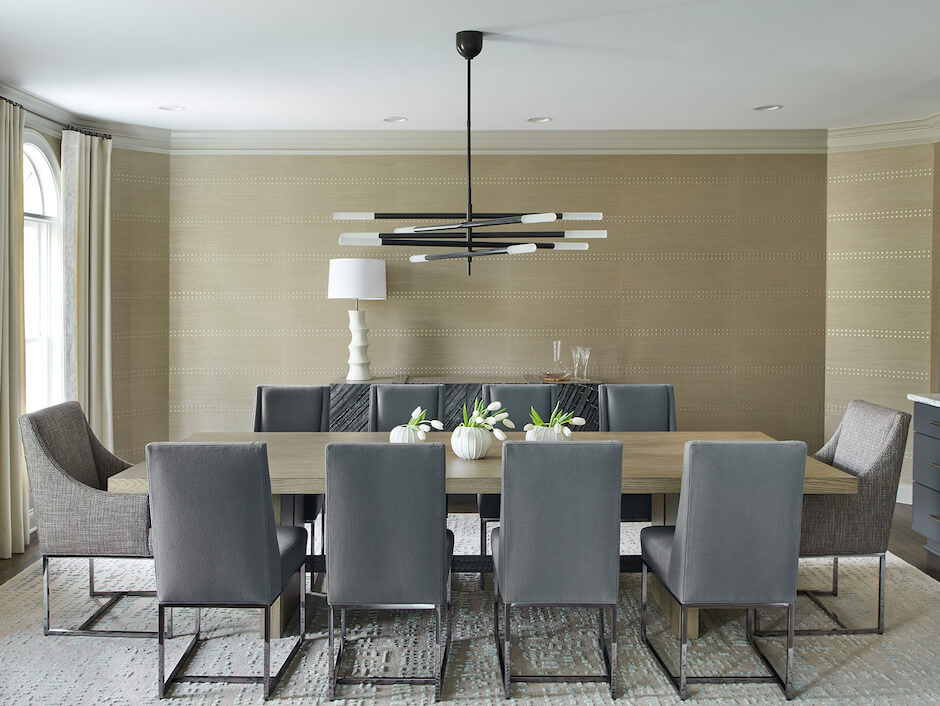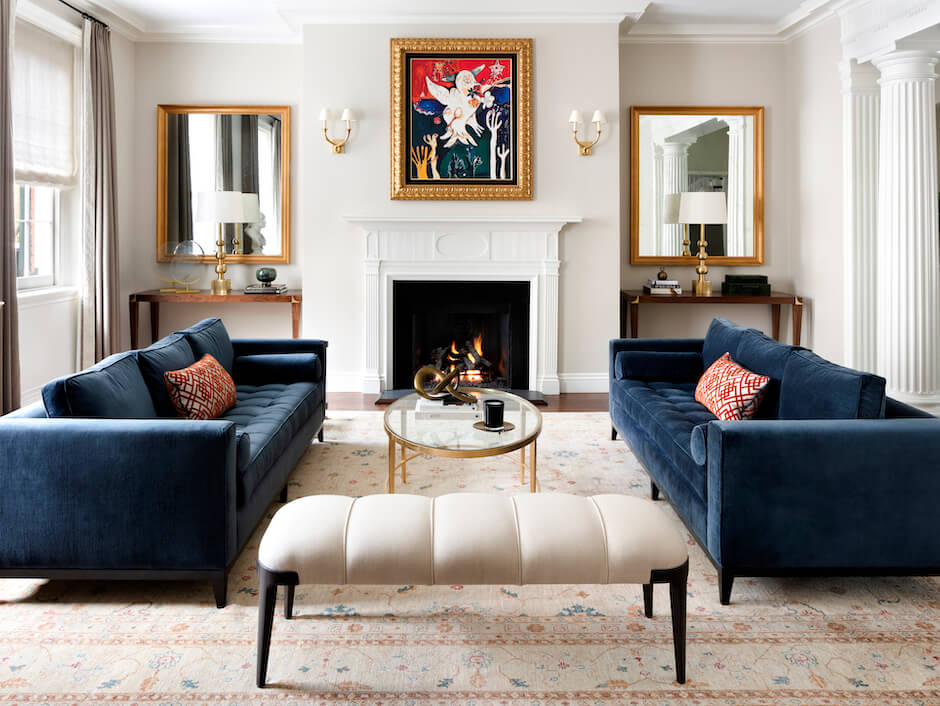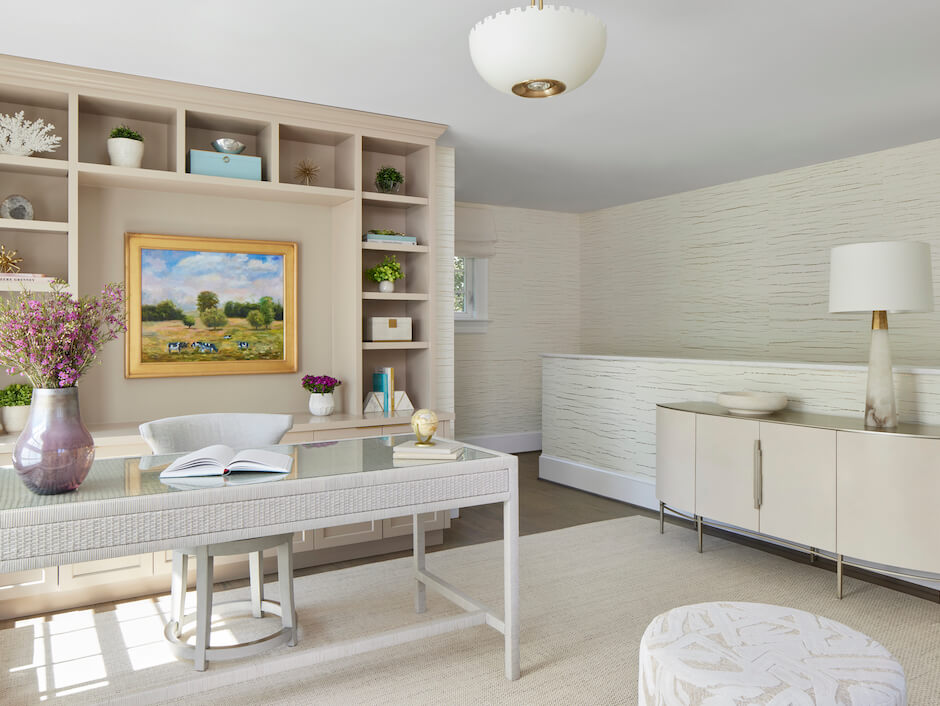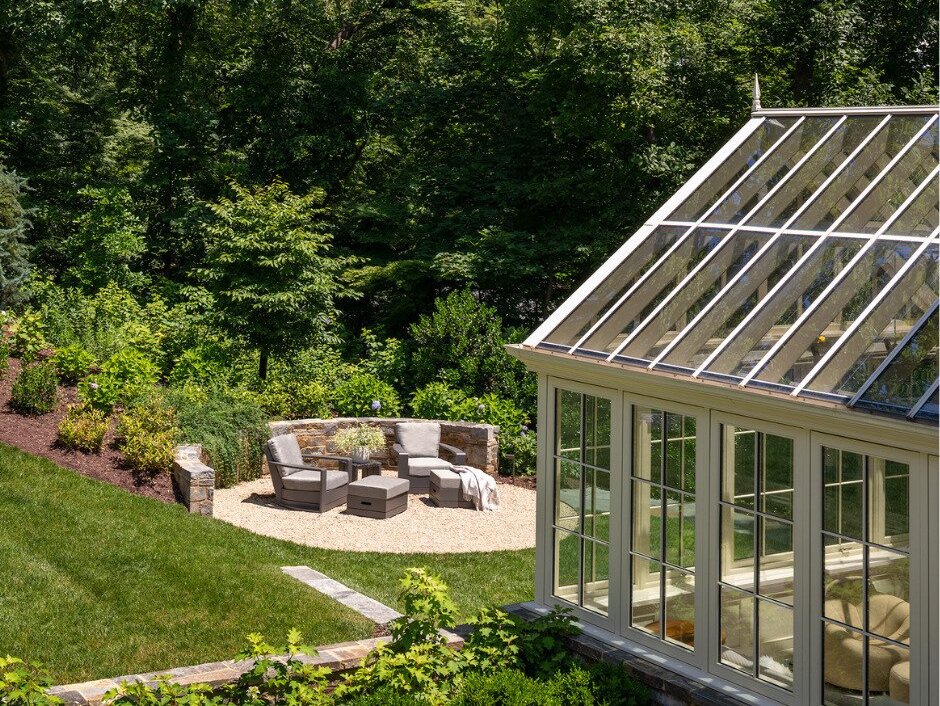TMD Inspiration
Mixing Textures: Secrets to a Stylish and Cohesive Home Design
Categories
Recent Articles
GET IN TOUCH
On social
By phone
202 465-8114
By Mail
1350 Beverly Road, Suite 115
PMB 143
McLean, VA 22101
By form
Interested in working with us?
Use the contact form to tell us more about your project. Someone will get back to you within 48 business hours.
Based in McLean, VA
Creating inspired interiors for discerning clients since 2003. Accepting clients in DC, Virginia, Maryland, and select cities throughout the United States.
Mixing Textures: Secrets to a Stylish and Cohesive Home Design

While creating tactile features that invite touch is important, creating texture isn’t always about how your furniture feels but can also be about creating visual texture in your space. Keep reading for tips on effectively mixing and matching texture in your home.
Mixing Textures: Contrast
Similar to lighting and color, texture requires contrast. Using different materials that provide various textures can create different atmospheres and feelings depending on how you style them. Whichever look you’re going for, contrasting textures can make your space feel lively and multi-dimensional. Using texture this way can be a great approach to offset an overpowering theme and create balance in a space.
However, contrasting textures in your space can be challenging to stay cohesive and not create a more chaotic environment. When mixing and matching textures, consider the visual weight of each material since that can affect how a space is perceived. For example, heavier textures such as stone, metal, or thick fabrics can ground a space and can be a great base, while lighter textures such as glass, linens, or sheer fabrics can add a more airy feel.
Pillows
One of the easiest ways to add texture to your space is through pillows. You might have even been doing this without realizing why it’s so fundamental to creating an exciting and unique visual space. Layering pillows can efficiently add unique textures and textiles to your room without breaking the bank. For example, adding a knit pillow to a velvet sofa or a linen pillow to a leather chair can create visual intrigue and add depth to your space.
Rugs
Rugs play a crucial role in interior design as they can anchor a space while enhancing the texture and depth of your room. Layering rugs—such as placing a small rug with a pattern or texture on top of a neutral base rug—can create a cozy and dynamic look. Using contrasting materials such as plush with jute can make a space more inviting and interesting. Choosing rugs with patterns can introduce more visual texture, and picking a pattern that coordinates with another textured element in the space (such as a sofa or pillow) can help create a balanced design. See my article for more information about properly caring for your rugs.
Mixing Textures: Wallpaper
Adding texture to a space isn’t just for furnishings. Textured wallpaper can add architectural interest and complement your home design. Textured wallpaper, such as grasscloth or embossed designs, can add a tactile element to your space that enhances its sophistication and interest. Wallpapers mimicking natural materials like stone or wallpapers with metallic finishes provide a pop of personality to your space.
My favorite wallpaper brand is Phillip Jeffries; they have a large and beautiful selection of natural, textured, and specialty wallpapers. In a recent project in Oakton, VA, we used Phillip Jeffries wallpaper throughout the home to create a cohesive design.
Mixed Materials
When mixing and matching textures, it is important to understand each material’s purpose in your space to achieve the look you want to achieve. Different textures can evoke different moods. For example, if you are trying to create a cozy bedroom, opting for a soft and tactile texture can help achieve this look. Or, if you are renovating a bathroom for a sleek feel, choose a more sharp and streamlined texture.
Natural materials such as wood are a great starting point for textures and can be a more sustainable option when using reclaimed wood. Natural materials can also bring a warmer and more organic feel. Meanwhile, sleek and shiny textures like stainless steel or marble can help create a more glamorous and modern look. Plants and ceramic textures can also brighten a space, such as bathrooms or kitchens.
By mixing and matching different textures throughout your home, you can create an interior design style that feels rich and inviting while also being visually appealing. Please visit our Projects portfolio for inspiration.



